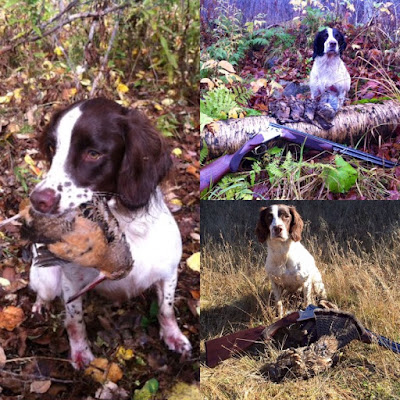Like the last Grouse School RGS regional biologist Andy Weik discussed habitat, and where to find grouse. Mass small game biologist Dave Scarpitti talked about public lands in Mass, and the state of grouse and woodcock in Mass. Both Andy and myself talked about scouting, and Andy's presentation on how to use Google Earth to scout was as popular as ever.
After lunch I did a presentation about dogs and dog training, but unlike the last event, we did not do a dog demonstration due to the heat. Boston/South Shore RGS chapter president Ernie Foster did a nice presentation about guns and shooting followed by RGS regional director Joe Levesque's discussion of equipment. We concluded the event with about 45 minutes of tactics and Q & A. I was happy with the way the event turned out, and we all received good feed back. The event went so well, that rather than alternating between Grouse School and the shooting clinic every other year, I am going to scrap the shooting clinic, and hold Grouse School every year.
Continuing,...
After the Grouse School concluded I decided it was time to get involved with the local RGS chapter. Until now I had been operating as a RGS Nomad, but I have been impressed with the level of commitment the members of the local chapter have shown. So, I tossed my hat in that ring.
That brings me to the next issue. We are having a "banquet". Not a traditional banquet, but rather a good old fashioned party. The event is called A Night For Conservation, and all hunters and anglers are welcomed. We are intent on cross pollinating with other conservation groups, such as Pheasants Forever, WTF, and TU. Our missions overlap, and by understand each other, and when needed, working together, we are that much stronger.
I've also got another campaign I'm beginning to work on. I think it's time to call it like it is, and stop being polite to those who would hurt us. In particular the anti-timber cutting crowd. We need to start calling them what they are; anti-forest management. While they "care" about the forest, they clearly don't care about the animals living in it, especially the 388 species of vertebrates that have a dependency on early successional habitat. Without proper forest management and timber cutting no new early successional habitat is created, and existing habitat becomes mature and no longer provides for the species that depend on it. I've begun working on a fact sheet that address this very issue.
Prototype of fact sheet. Still under construction.
























